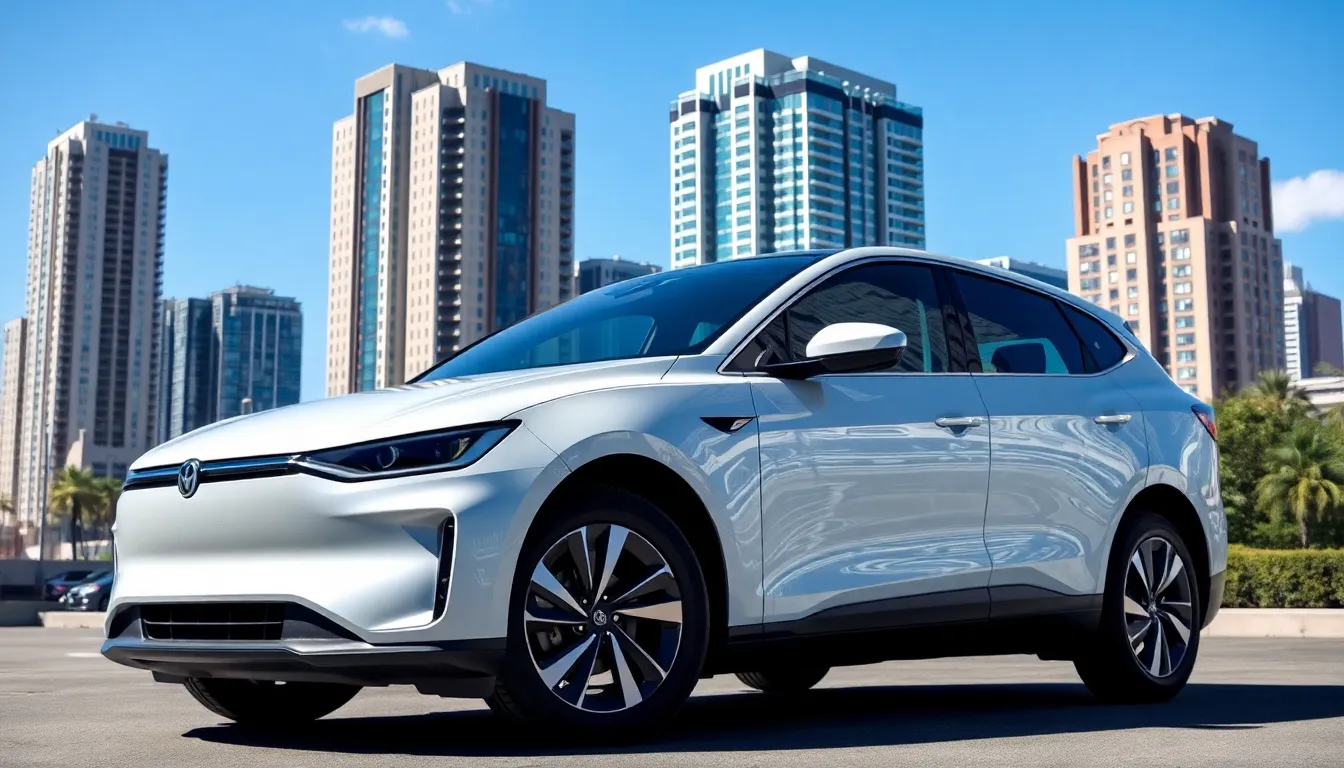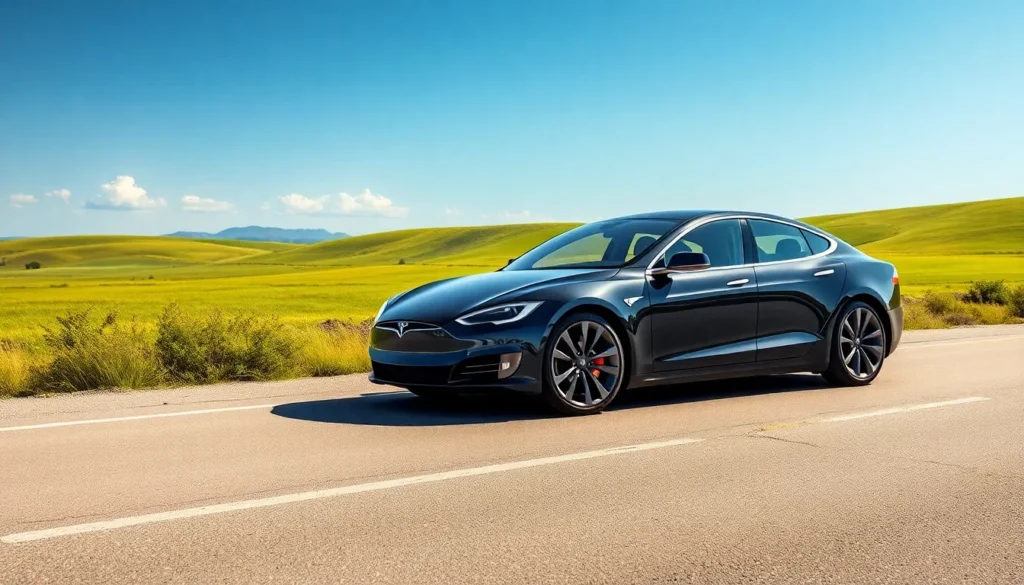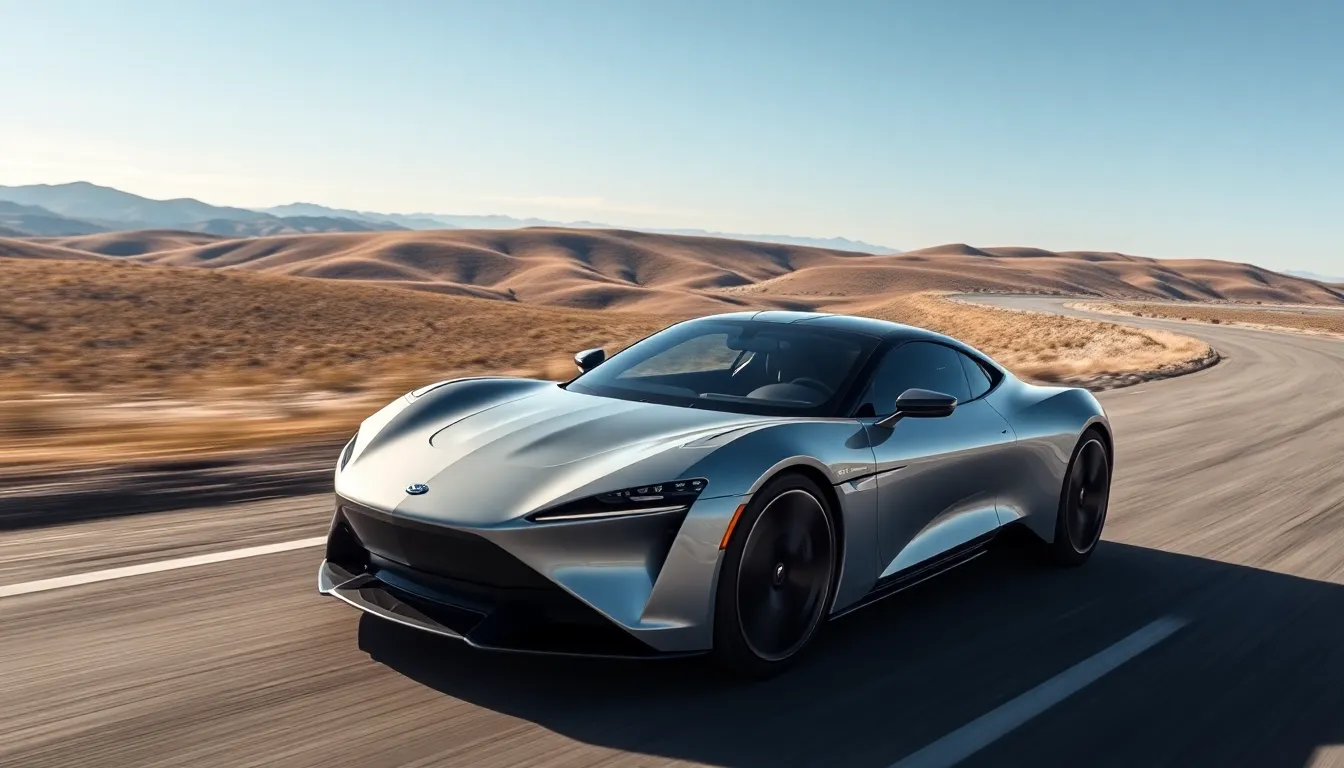In a world where range anxiety can feel like a bad breakup, the longest range electric vehicles swoop in like a superhero with a fully charged battery. These impressive machines not only promise to take you farther on a single charge but also make the journey feel like a breeze. Imagine cruising past gas stations with a sly grin, knowing you’ve got the power to go the distance without breaking a sweat.
Gone are the days of planning your pit stops like a military operation. With advancements in battery technology, some electric vehicles now boast ranges that could make even the most seasoned road tripper jealous. From sleek sedans to rugged SUVs, the options are as varied as your playlist for those long drives. Buckle up as we explore the electric rides that’ll keep you rolling without the constant worry of recharging.
Table of Contents
ToggleOverview of Longest Range Electric Vehicles
Longest range electric vehicles (EVs) showcase significant advancements in battery technology and design, ensuring drivers experience enhanced travel freedoms. EVs such as the Tesla Model S Long Range, Lucid Air Dream Edition, and Ford Mustang Mach-E extend driving ranges to impressive distances.
| Vehicle Model | Maximum Range (miles) |
|---|---|
| Tesla Model S Long Range | 405 |
| Lucid Air Dream Edition | 503 |
| Ford Mustang Mach-E (Extended Range) | 312 |
| Hyundai Ioniq 5 | 303 |
| BMW iX xDrive50 | 324 |
Various models appeal to diverse consumer preferences while providing an alternative to traditional internal combustion engine vehicles. Sedan options like the Tesla Model 3 and the Nissan Leaf empower users with efficient and eco-friendly transportation.
SUV segments offer versatility and spacious interiors alongside long ranges. Additionally, luxury models cater to high-end consumers seeking performance and prestige in electric driving experiences.
Technology enhancements, such as regenerative braking and efficient power usage, contribute to the extended ranges. Charging infrastructure continues to expand, improving convenience for long-distance travel. With the right charging stations, drivers sustain their journeys without significant delays, transforming perceptions about EV accessibility.
Each model presents unique features that prioritize range capabilities, driving dynamics, and interior comfort, appealing to a wide audience. As manufacturers invest in further innovative technologies, longer range electric vehicles become increasingly accessible and appealing to potential buyers.
Advantages of Long Range Electric Vehicles

Long range electric vehicles (EVs) provide numerous benefits, making them appealing choices for drivers seeking mobility and sustainability.
Environmental Benefits
Long range EVs significantly reduce greenhouse gas emissions compared to traditional gasoline vehicles. Their zero tailpipe emissions contribute to cleaner air quality, which benefits urban areas by lowering pollution levels. Battery efficiency in these vehicles also allows for longer distances on a single charge, reducing the need for frequent charging, which can depend on fossil fuels. Furthermore, as the grid becomes greener, driving these EVs decreases overall carbon footprints, supporting global efforts to combat climate change.
Cost Efficiency
Long range EVs offer substantial cost savings over time. Electric vehicles typically have lower operational and maintenance costs compared to internal combustion engines. Owners spend less on fuel, as electricity is generally cheaper than gasoline. Regenerative braking systems enhance efficiency, maximizing battery life and reducing wear on brakes. Additionally, government incentives and tax rebates can lower the initial purchase price, making long range EVs not only practical, but also economically viable investments for consumers.
Top Longest Range Electric Vehicles in 2023
Several electric vehicles excel in distance capabilities, providing options for drivers seeking long-range solutions. The following models stand out in 2023.
Vehicle 1: Tesla Model S Long Range
The Tesla Model S Long Range offers an impressive range of 405 miles. It features a dual motor all-wheel drive for enhanced performance. Equipped with a 100 kWh battery, it accelerates from 0 to 60 mph in just 3.1 seconds. Advanced safety features include Autopilot and over-the-air software updates, enhancing the driving experience. This model combines luxury and efficiency seamlessly, making it a popular choice for long-distance travel.
Vehicle 2: Lucid Air Dream Edition
The Lucid Air Dream Edition leads the electric vehicle market with an astonishing range of 503 miles. Powered by a 117 kWh battery, it boasts rapid charging capabilities, achieving 300 miles of range in just 20 minutes. The car features a spacious interior, providing modern technology and comfortable seating for five. With acceleration from 0 to 60 mph in 2.5 seconds, this model offers performance without compromising range, appealing to performance-oriented buyers.
Vehicle 3: Ford Mustang Mach-E
The Ford Mustang Mach-E impresses with a range of 312 miles, particularly in its California Route 1 trim. It includes a standard range battery and an optional extended-range battery. Its sporty design reflects its heritage, while the spacious cabin ensures comfort. Advanced technology includes Ford’s SYNC 4 infotainment system and driver assistance features like Ford Co-Pilot360. The Mach-E provides a perfect blend of style, practicality, and electric capability, catering to a diverse audience.
Factors Influencing Electric Vehicle Range
Several factors significantly affect the range of electric vehicles. Understanding these factors can help consumers make informed decisions when selecting long-range EVs.
Battery Technology
Battery technology plays a central role in determining an electric vehicle’s range. Innovations such as lithium-ion batteries enable higher energy density, allowing for longer distances on a single charge. Manufacturers prioritize battery capacity, measured in kilowatt-hours (kWh), which directly influences range. For instance, the Tesla Model S Long Range uses a 100 kWh battery to achieve a range of 405 miles. Enhanced battery management systems also optimize performance, prolonging lifespan and efficiency. As research advances, solid-state batteries promise even greater energy storage and reliability, further extending driving ranges.
Aerodynamics and Weight
Aerodynamics and weight directly influence energy consumption in electric vehicles. Designers focus on creating streamlined shapes to minimize wind resistance, which enhances efficiency at higher speeds. A lower drag coefficient results in better air flow and reduced energy expenditure during travel. Additionally, the vehicle’s weight impacts efficiency; lighter materials such as aluminum and carbon fiber reduce the overall mass, improving range. For instance, the Lucid Air Dream Edition utilizes lightweight design strategies, contributing to its remarkable 503 miles of range. Balancing aerodynamics and weight remains crucial for maximizing range in EVs.
Driving Conditions
Driving conditions significantly affect the range of electric vehicles. Factors such as temperature, terrain, and speed impact energy consumption. Colder temperatures can reduce battery efficiency, as heating systems draw additional power. Hilly terrains require more energy for acceleration and deceleration, lowering overall range. Driving at higher speeds increases aerodynamic drag, leading to quicker battery depletion. EVs often feature range estimators that account for these variables, providing realistic assessments for drivers. Long-range models, such as the Ford Mustang Mach-E, incorporate smart algorithms to adjust range predictions based on driving conditions, ensuring more accurate data for users.
The emergence of long-range electric vehicles marks a significant shift in the automotive landscape. With advancements in battery technology and design, these vehicles are redefining travel possibilities. They not only minimize range anxiety but also promote eco-friendly driving habits, making them appealing to a broader audience.
As charging infrastructure continues to improve, the convenience of long-distance travel in EVs becomes increasingly accessible. Consumers now have a diverse array of options that blend performance, comfort, and efficiency. The future of electric vehicles looks bright as they pave the way for sustainable transportation, offering both economic and environmental benefits.





